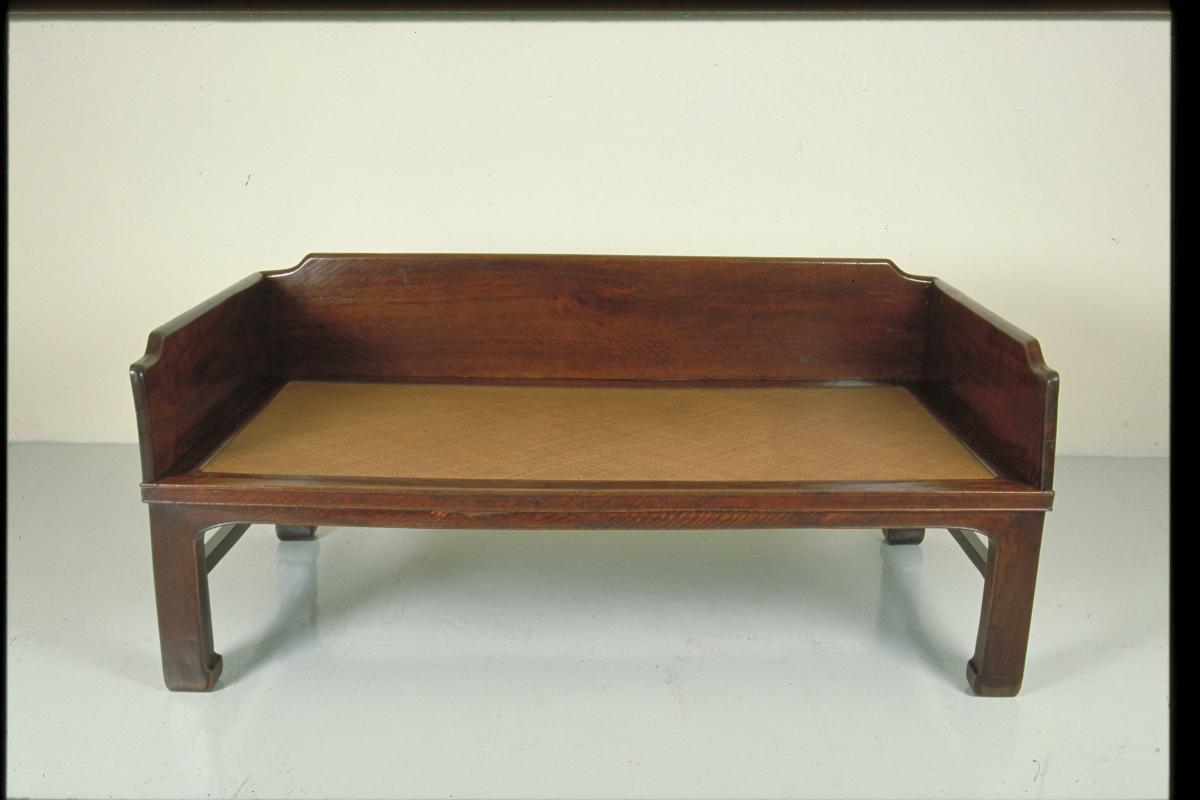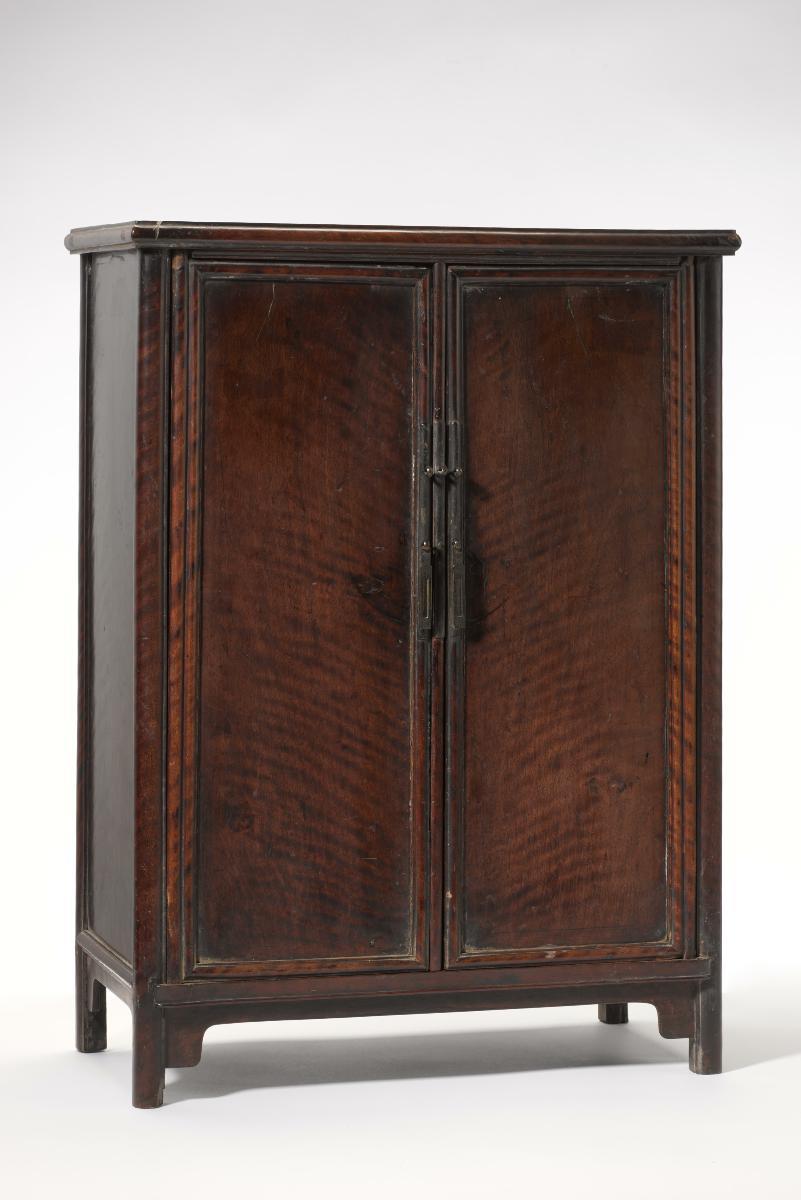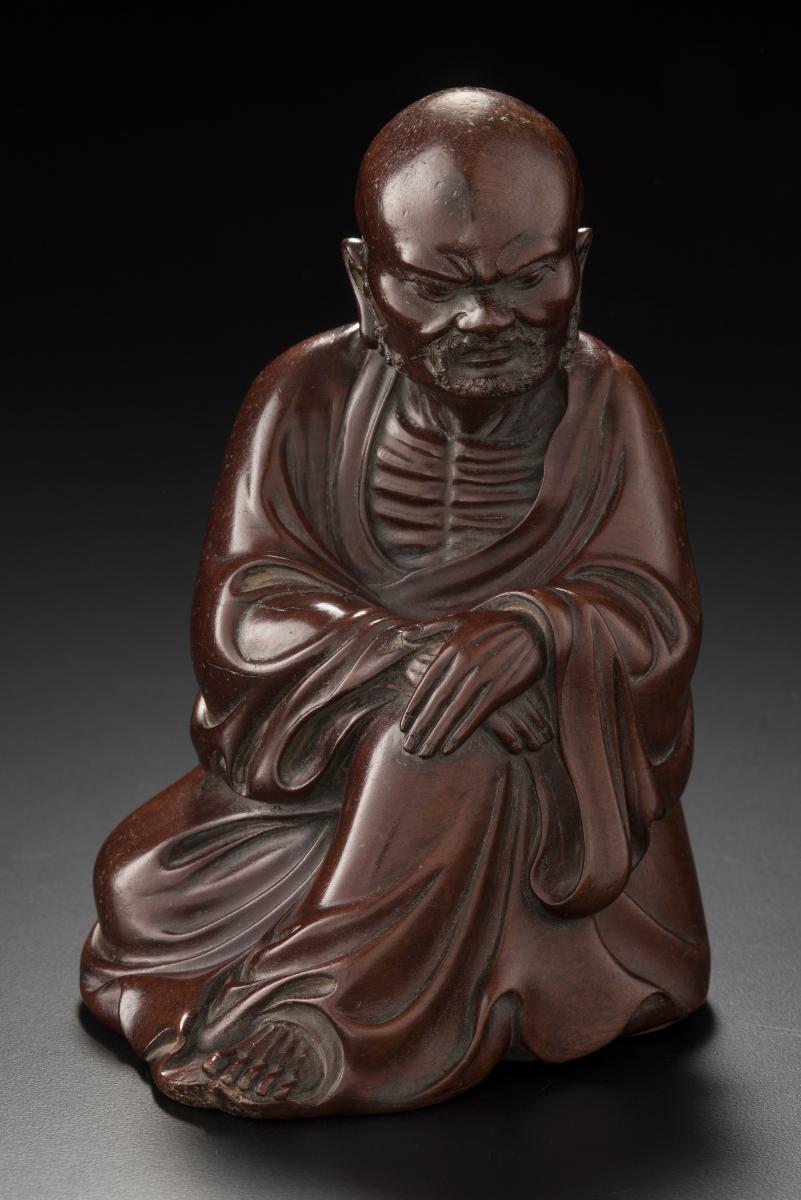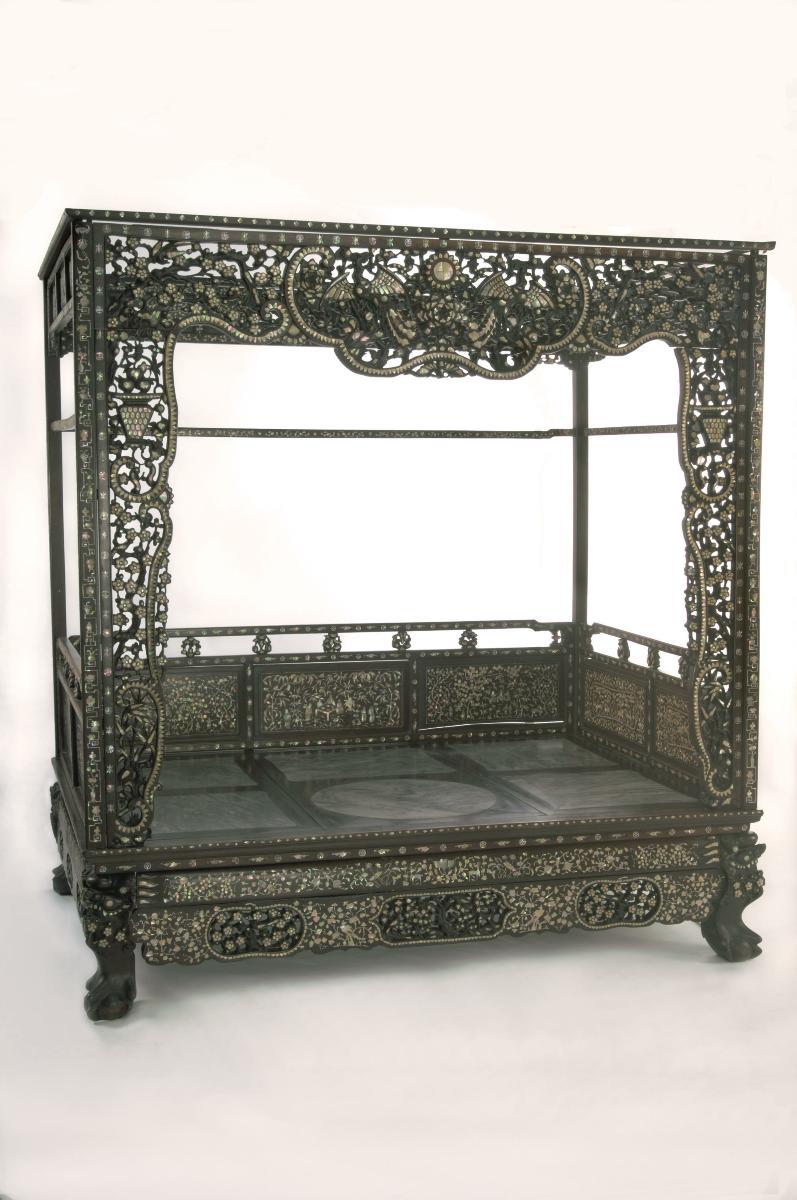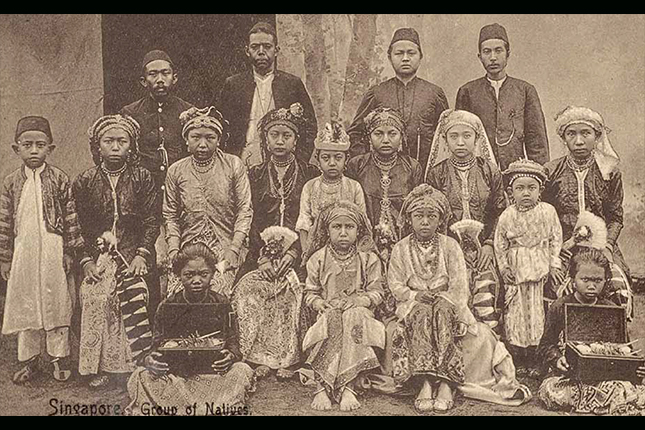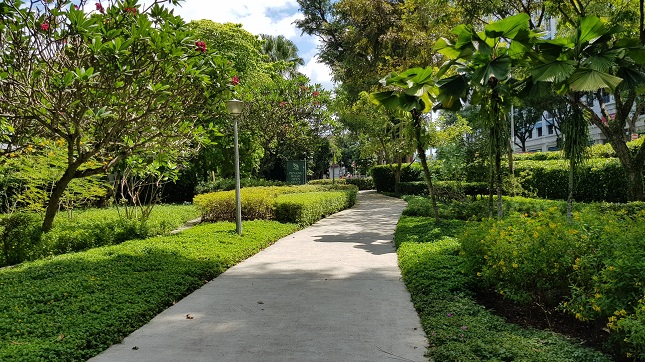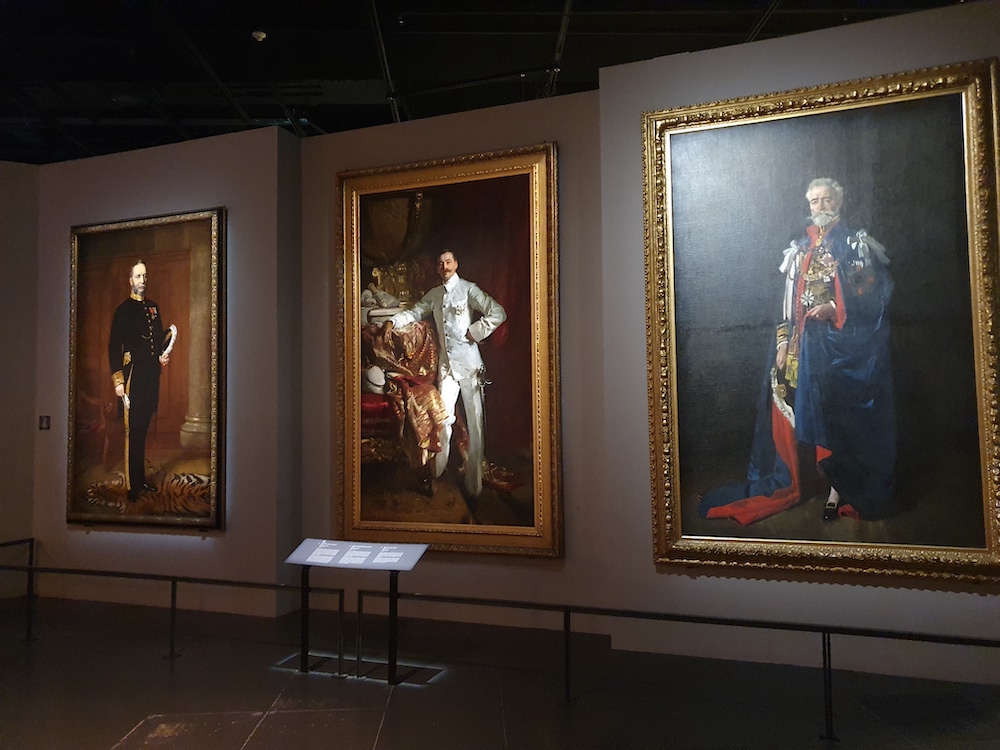The wooden parts of this Qing day bed are left unadorned but the proportion of the bed lends it a sense of stateliness, which makes the bed seem larger than in reality. This modestly styled furniture is characteristic of most Fujianese furniture of longyan wood. Called 'ta', the day bed is an informal piece of furniture long favoured by the literati, in particular, for use in the study, where it had multiple purposes. The longyan (more commonly, longan, in Cantonese) tree was a regional specialty of Fujian province, only cultivated for fruit by Fujianese entrepreneurs during the Ming dynasty (1368-1644), together with tea and other cash crops, such as the lychee. It was only in the Qing dynasty (18th century), as the old longyan trees were being felled en masse, that the timber was found to be highly suitable for making furniture. The longyan’s aesthetic quality was seen to be comparable to that of the more established hardwoods such as blackwood (shuanzhi) and zitan.




